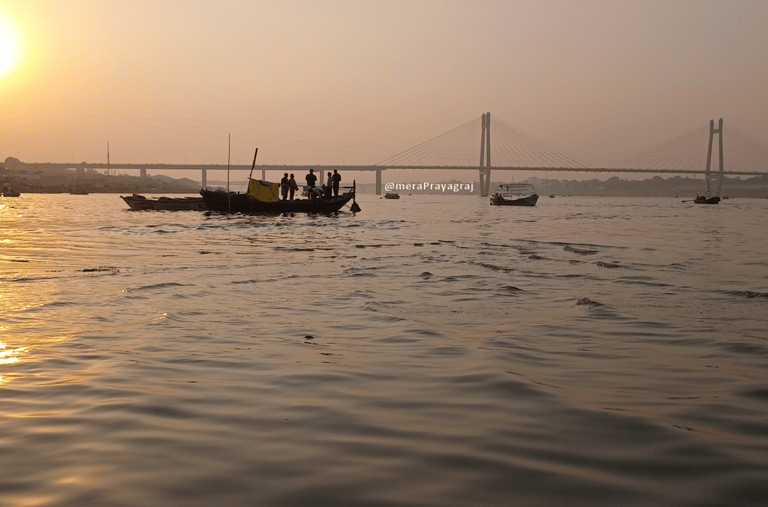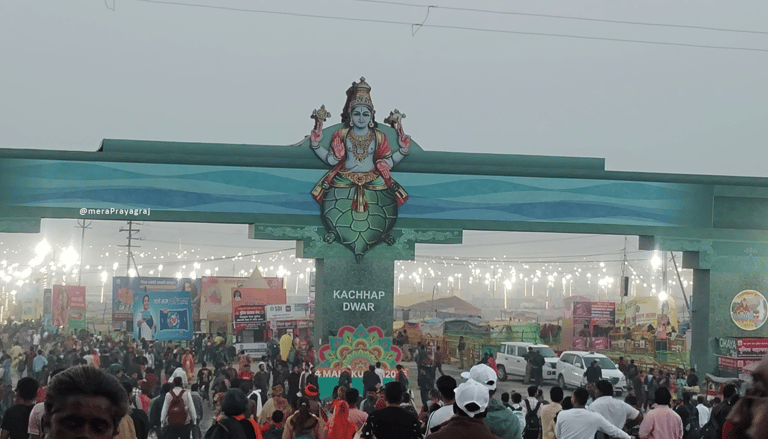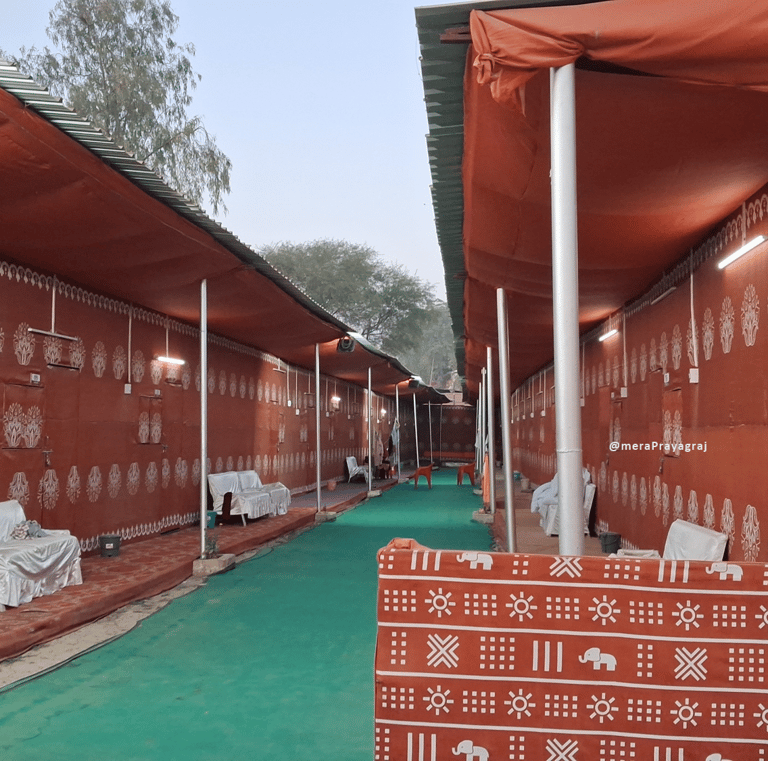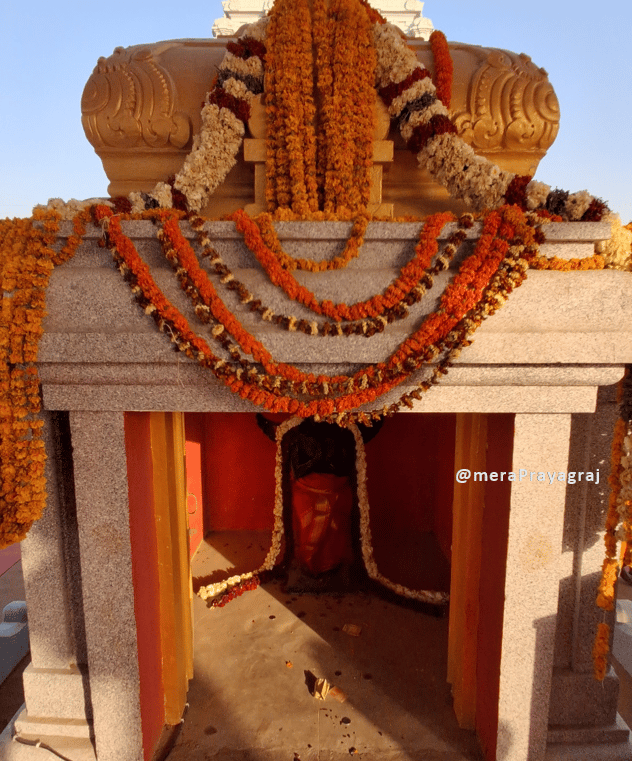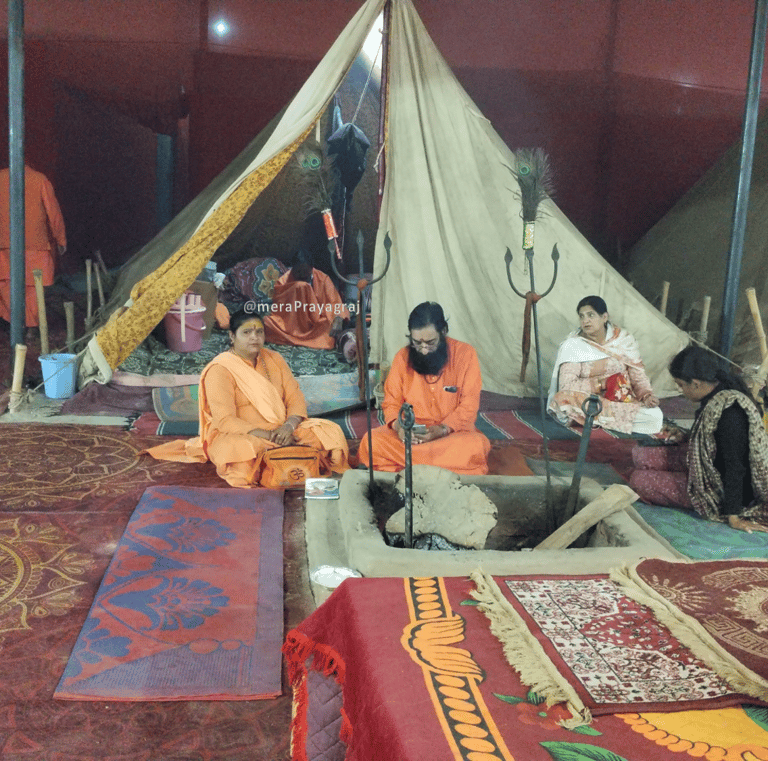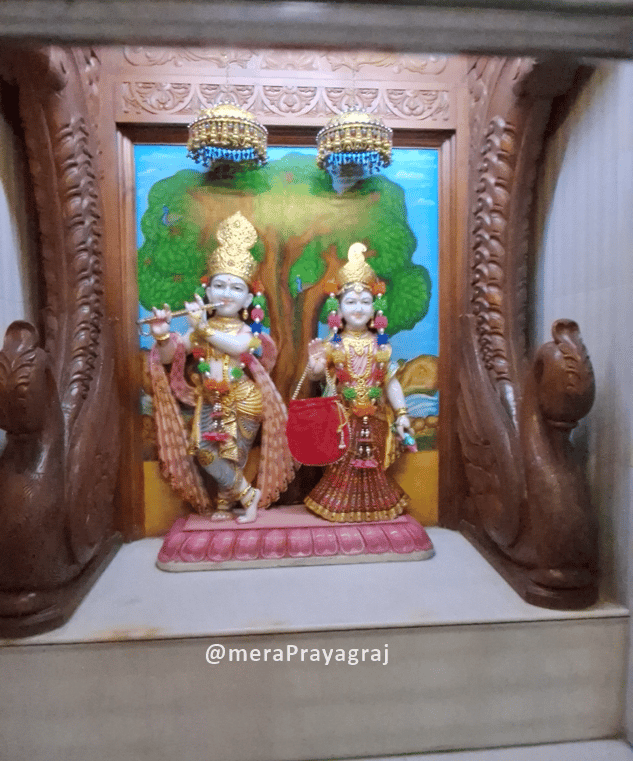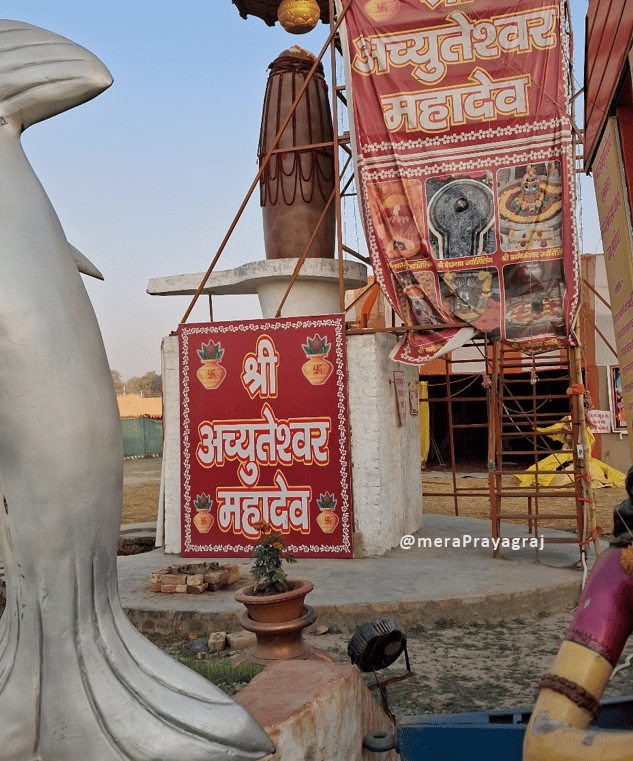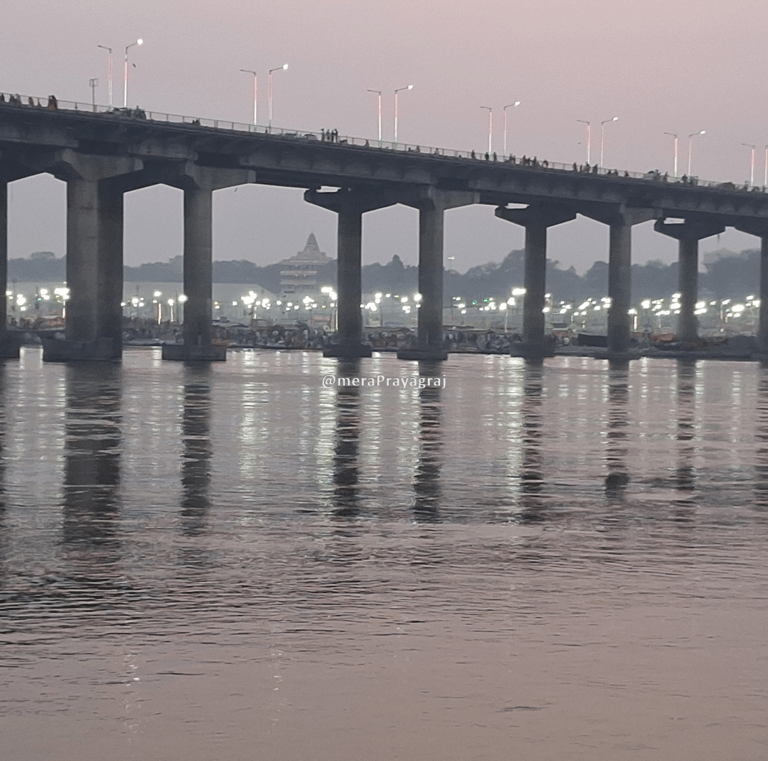Triveni Sangam is the sacred confluence of the Ganga, Yamuna, and the invisible Saraswati rivers, located in Prayag (modern-day Prayagraj), India. In Hinduism, this confluence holds immense spiritual significance. It is believed that bathing at the Triveni Sangam purifies the soul and leads to moksha (liberation from the cycle of birth and death).
"त्रिवेण्या संगमे पुण्ये ललिता तत्र संस्थिता।सिद्धिदात्री महामाया भुक्तिमुक्तिप्रदायिनी।।"
कल्पद्रुम तंत्र
This site is mentioned in numerous Hindu scriptures, especially the Puranas, as a place of great sanctity. It is a significant location for religious rituals and ceremonies, particularly during the Kumbh Mela, which is held every 12 years.
The Triveni Sangam is divided into three main sections, each with its own spiritual importance:
The central part of the Sangam.
Spread across a circle of 30 dhanush (an ancient unit of measurement).
This site is considered the most auspicious for ritual bathing and worship.
Located near the sacred Akshayavat (immortal banyan tree).
Akshayavat is considered extremely sacred in Hinduism.
It is believed that this tree is eternal and will survive even during Mahapralaya (cosmic dissolution).
Extends from the middle stream of the Sangam to the Someshwar Temple in Arail.
Devotees come here for prayers and religious rites.
According to scriptures, the 13 forms of Veni Madhav that protect pilgrims are:
Mool Madhav – Located to the right of Akshayavat; known as the Vaishnava Peeth.
Akshay Madhav – Situated to the north of Akshayavat.
Vat Madhav – Located beneath Akshayavat.
Shankha Madhav – Situated in Chhathanag.
Veni Madhav – Located in Daraganj.
Sankashtahar Madhav – Located in Jhusi, beneath the Sandhya Vat tree.
Chakra Madhav – Located southeast (Agni corner) of Akshayavat.
Gada Madhav – Located to the south of Akshayavat.
Padma Madhav – Located southwest (Nairitya corner) of Akshayavat.
Anant Madhav – Located in the west direction.
Bindu Madhav – Located northwest (Vayavya corner) of Akshayavat.
Manohar Madhav – Located in the north direction.
Asi Madhav – Located northeast (Ishan corner).
Shri Veni Madhav – The Presiding Deity of Prayag
Shri Veni Madhav is worshipped as the principal deity of Prayag (Prayagraj), and his 13 forms are of special significance to pilgrims. The Padma Purana's Prayag Mahatmya describes how Lord Vishnu resides in 13 different forms across the region, making it even more sacred and salvation-giving.
Appearance of Shri Veni Madhav:
Depicted in Chaturbhuj (four-armed) form.
He holds four divine symbols:
Shankha (conch) – Symbol of divine sound and energy.
Chakra (Sudarshan) – Represents dharma and justice.
Gada (mace) – Symbol of strength and protection.
Kamal (lotus) – Symbol of purity and spiritual knowledge.
Protector of Prayag – Lord Vishnu as Veni Madhav
Lord Vishnu, in the form of Veni Madhav, is believed to protect the region of Prayag along with all other deities, especially Indra (King of the gods) and Shiva, who help maintain the sanctity of this holy site.
"प्रयागे तु ललिता देवी, वाराणस्यां विशालाक्षी, विंध्ये विंध्यवासिनी।".
देवी भागवत महापुराण
Lord Vishnu as a Child on Akshayavat Leaf
According to legend, Lord Vishnu takes the form of a child sleeping on a leaf of Akshayavat, while Lord Shiva stands guard over him.
Granter of the Four Purusharthas
S hri Veni Madhav grants devotees the four goals of human life:
Dharma (righteousness) Artha (wealth) Kama (desires) Moksha (liberation)
Significance of the Akshayavat (Immortal Banyan Tree)
The Vat region (Akshayavat area) is one of the most sacred locations in Prayag. From here, one can see the banks of six river flows:
Two banks of the Ganga
Two banks of the Yamuna
Two banks of the Sangam
Mythological Importance of Akshayavat:
According to Hindu belief, the Akshayavat tree is eternal.
It is considered a symbol of the Trimurti – Brahma (creator),
Vishnu (preserver), and Shiva (destroyer).
It is believed that this tree will survive even after the entire
universe is destroyed.
Antya Veni is one of the three sacred streams of Triveni Sangam.
It symbolizes the final stage of the river, where it fully merges
into the Sangam.
It stretches from the middle stream of the Ganga and Yamuna to the Someshwar Temple located in Arail.
This is the final point of the Sangam, where the rivers fully unite and continue their divine journey.
Spiritual Significance of Antya Veni:
Final stage of spiritual journey – Just as Adi Veni marks the beginning of the journey, Antya Veni symbolizes attainment of moksha.
Union of soul and Supreme – It is believed that bathing here leads to liberation.
Prominent site for Pind Daan and Tarpan – Devotees perform rites here for their ancestors, hoping to bring them peace.
प्रयागो मध्यमावेदिः पूर्वावेदिः गयाशिरः । विरजा दक्षिणा वेदिरनन्तफलदायिनी ।। प्रतीची पुष्करा वेदिस्त्रिभिः कुण्डैरलंकृता | समन्त पंचका प्रोक्ता वेदिरेवोत्तराव्यया ।।
वामन पुराण
Antya Veni – Symbol of Life, Death, and Rebirth
This part of Triveni Sangam represents the cycle of life, death, and rebirth. It is not just a geographical confluence but a spiritual one, where the soul prepares to unite with the Supreme.
Triveni Sangam is not just a meeting point of rivers—it is a highly sacred and spiritual center in Hinduism. It is regarded as a gateway to moksha, and people from all over the world come here to bathe, believing it washes away their sins. The presence of Akshayavat and Shri Veni Madhav further enhances the sanctity of this holy place.
This sacred site has, since time immemorial, offered peace, salvation, and a deep divine experience to devotees.
Come, experience the sacred confluence of the Ganga, Yamuna, and Saraswati at Triveni Sangam.
Get in touch
© 2025. All rights reserved.


